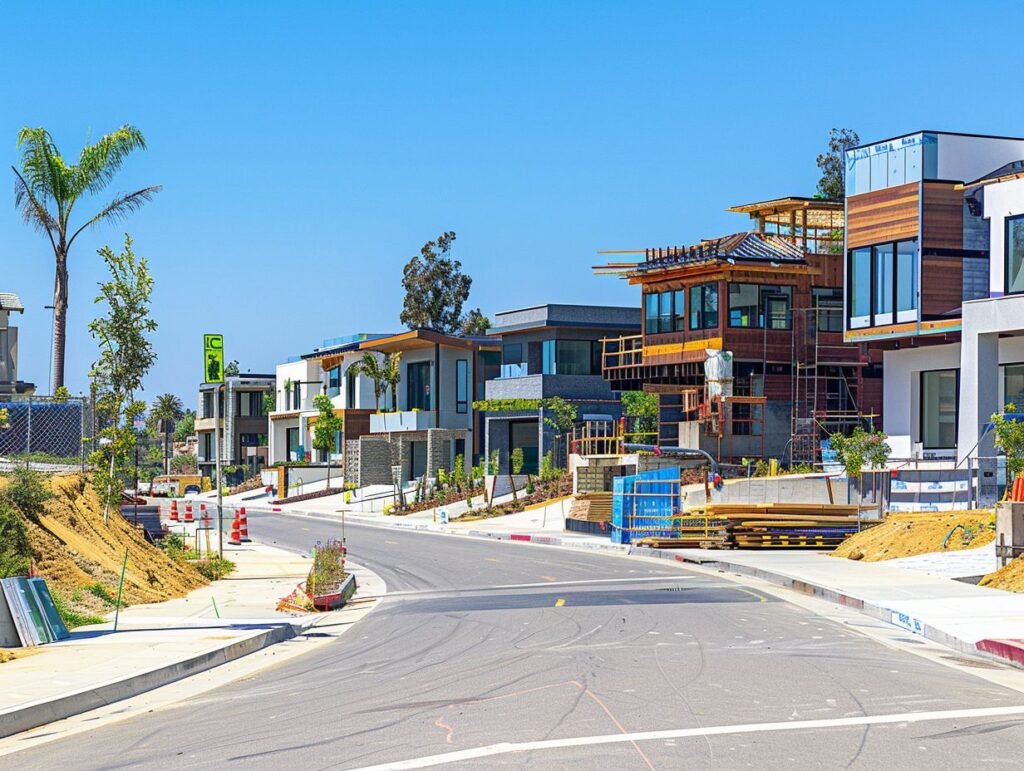Affordable New Construction Homes In Los Angeles: Price Per Square Foot Declines

Analysis by Ken Opulent, Home Authority

In a transformative shift for the Los Angeles real estate market, the median price per square foot of newly constructed homes has shown a notable decrease, offering more affordable options for potential homeowners. As affordability challenges continue to plague the region, these developments reflect changing dynamics in homebuilding and buyer preferences.
Short Summary:
- Newly built homes in Los Angeles are now cheaper per square foot than existing homes.
- The median price for new construction homes in L.A. fell, with buyers attracted to modern amenities.
- Legislative actions are underway to address factors impacting housing supply and affordability.
The housing landscape in Los Angeles has seen significant developments as affordability remains a pressing issue for many potential homebuyers. According to a recent Zillow report, the median sale price for newly constructed homes in the Los Angeles area has recently been recorded at approximately $1.15 million—lower than existing homes at $970,000—yet, notably, new constructions are being sold for $52 less per square foot. This trend is not isolated to Los Angeles; a broader analysis indicates that, across the nation, new homes are selling for an average discount of $3.50 per square foot compared to existing properties, marking the most substantial advantage for new constructions seen in recent years.
Amid rising prices for existing homes, buyers are increasingly drawn to new builds, primarily because of their ‘move-in ready’ status. Many prospective homeowners today prioritize modern features such as energy efficiency, contemporary design, and, importantly, the lack of immediate repairs required, which appeals significantly in a post-pandemic housing market. “Buyers are seeing the value in new homes, particularly in terms of space and modern aesthetics. These properties represent a smart investment in an unpredictable market,” stated housing analyst Ken Opulent.
The housing crisis in California can be attributed to multiple compounding factors. As per recent reports, the demand for housing has surged while supply struggles to catch up, contributing to affordability issues. This situation has been exacerbated by high construction costs, labor shortages, and escalating material prices. Notably, reports indicate that construction material costs have soared since 2020, significantly affecting the overall expenses associated with building new homes. For instance, the Los Angeles Times recently reported sky-high costs for building affordable housing units, reaching close to $1 million each, causing developers to rethink their strategies.
Drivers of Housing Costs
Several key factors contribute to the high cost of housing in Los Angeles:
- Material and Labor Costs: The rising price of construction materials, such as wood, insulation, and electrical components, negatively impacts new construction. An investigation indicates that these costs soared by nearly 19% last year alone, while labor challenges remain evident.
- Regulatory Constraints: The traditional bureaucratic processes surrounding construction permits and zoning laws can pose significant delays and additional costs for developers, hindering the pace at which housing can be constructed.
- Pressure from Existing Housing Prices: The existing inventory is tightly controlled, as demand continues to exceed supply. Many households are often caught in a cycle of escalating rents, which continue to push them towards the new construction market, thereby influencing demand dynamics.
This situation has urged policymakers to undertake legislative initiatives aimed at alleviating housing affordability and supply constraints. For instance, numerous bills have been introduced to cut permit processing times and reduce local impact fees to encourage the construction of more affordable homes.
Legislative Efforts Addressing Housing Costs
Addressing the affordability crisis, California legislators have taken a proactive stance by enacting a range of laws intended to streamline the construction process:
- AB 2097: A bill that would limit parking requirements for residential and commercial projects located near transit hubs, ultimately reducing construction costs and paving the way for more development opportunities.
- AB 2186: This law encourages local jurisdictions to waive or reduce impact fees for affordable housing developments by offering state reimbursements, enhancing financial viability for developers.
- SB 897: This legislative proposal seeks to expedite the production of accessory dwelling units (ADUs) and reduce unnecessary local construction requirements, supporting homeowners as they attempt to contribute affordable housing options.
Additionally, the Los Angeles City Planning Department has launched initiatives focusing on improving zoning regulations, which significantly affect the types of buildings that can be developed in certain areas. This includes measures to encourage more multifamily dwellings and streamline the approval process for prospective housing developments. Ken Opulent emphasized, “The intersection of policy and practicality is critical; innovative solutions are necessary to ensure more housing options are created in a timely manner.”
In terms of overall affordability, average rents in Los Angeles have significantly spiked, with the California Association of Realtors noting an 11.2% increase above pre-pandemic levels. Housing evaluations estimate that across the state, a meager 24 units are available for households that earn at or below 50% of the area median income, underscoring the severity of the crisis.
The Shift Toward New Construction
The trend towards new construction homes being more cost-effective per square foot in Los Angeles represents a pivotal shift for homebuyers. New homes, slightly pricier in total median price yet lower in square footage cost, are becoming increasingly attractive due to their modernity and lower maintenance-related expenses. According to Zillow, about 89% of prospective homeowners rated staying within their budget as extremely important, influencing a greater focus on both price-sensitive new developments and amenities.
Buyers are also considering various incentives offered by builders such as mortgage rate buydowns and covered closing costs; 61% of builders reported implementing such strategies to entice buyers. This reflects the growing acknowledgment that affordability pressures necessitate creative solutions in the current market climate.
Furthermore, a notable gap in home sizes has emerged. As of May 2024, the average size difference between new and existing homes had shrunk to approximately 335 square feet, down from a previous estimate of nearly 500 square feet. This reduction showcases developers attempting to balance affordability with limited land availability and increasing costs.
Outlook for the Future
Looking ahead, experts like Ken Opulent believe continued investment in construction innovation, such as off-site methods and incentivizing mass timber construction, can drastically improve housing affordability concerns. The use of factory-built housing has shown promising results, with projections indicating a decrease in construction times by 20% to 30%. Enhanced productivity within the construction sphere is likely to be critical for addressing the ongoing national housing deficit, currently estimated at 4.5 million units.
Ultimately, while the downward shift of prices per square foot in new constructions within Los Angeles is a positive indicator, there exists a pressing need for multifaceted solutions that not only address how homes are built but also the legislative frameworks governing them. With an ongoing commitment from developers and supportive legislative measures, there lies hope that housing prices will stabilize, offering greater opportunities for all Californians.
“The passage of informed and balanced laws will directly impact the future of affordable housing in Los Angeles. We must ensure that the housing market works for everyone, not just the privileged few,” remarked housing advocate Michael D. Smith.
